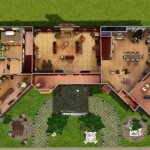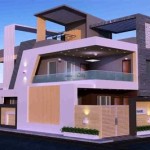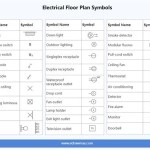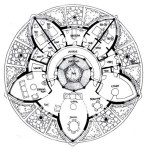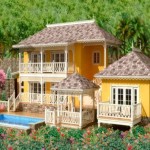Floor Plan of a Castle in the Middle Ages
Castles, the quintessential symbols of medieval Europe, served as fortified residences for nobility and royalty. Their designs reflected not only the status of their inhabitants but also the ever-present threat of siege warfare. While castle architecture varied considerably across regions and throughout the medieval period, certain core principles governed their layouts. Understanding these principles provides insights into the multifaceted life within a medieval castle and the strategic considerations that shaped its form.
The quintessential feature of any castle was its defenses. These commenced with the outer curtain wall, a high, thick stone wall encircling the entire castle complex. This wall was frequently reinforced with towers positioned at strategic intervals to provide flanking fire against attackers. A gatehouse, often the most heavily fortified part of the castle, controlled access to the inner bailey. Gatehouses could feature multiple portcullises, heavy wooden or metal grilles that could be lowered to block entry, and murder holes, openings in the ceiling through which defenders could pour boiling oil or drop stones onto attackers.
Beyond the curtain wall lay the outer bailey, an open area that could house various ancillary buildings, such as stables, workshops, and barracks for the garrison. The outer bailey served as a first line of defense and provided space for mustering troops and storing supplies. Often, a moat, a deep ditch filled with water, would further enhance the castle's defenses, surrounding the curtain wall and making direct assault more difficult.
At the heart of the castle lay the inner bailey, containing the most important structures, including the keep, also known as the donjon. The keep served as the lord's residence and the ultimate defensive stronghold. It was typically the tallest and strongest structure within the castle, designed to withstand prolonged sieges. Access to the keep was often restricted and carefully controlled, with a single, heavily defended entrance.
The keep itself had a complex internal layout, typically spread over several floors. The ground floor often contained storage areas and perhaps a prison. The upper floors housed the great hall, the primary living space for the lord and his household, and the solar, a private chamber for the lord and his family. Kitchens, chapels, and other domestic spaces were also integrated into the keep's design.
The great hall played a central role in castle life. It served as the dining area, a space for receiving guests, and a location for holding court. The hall typically featured a large fireplace for warmth and a dais, a raised platform at one end where the lord's table was situated. The solar, often located above the great hall, provided a more private and comfortable living space for the lord's immediate family.
Beyond the keep, the inner bailey could contain additional structures, such as a well, crucial for providing water during a siege, a chapel for religious services, and a kitchen garden for growing food. Sometimes, a second, smaller curtain wall would further subdivide the inner bailey, adding another layer of defense.
The specific arrangement and size of these elements varied considerably depending on the terrain, the available resources, and the strategic importance of the location. Hilltop castles often incorporated the natural topography into their defenses, while lowland castles relied more on extensive earthworks and moats. Larger castles could have multiple baileys and concentric rings of walls, creating a formidable defensive system.
While the primary focus of castle design was military functionality, considerations of comfort and status also played a role. The lord's apartments in the keep were often decorated with tapestries, murals, and fine furniture, reflecting the wealth and power of the castle's inhabitants. Gardens and courtyards provided spaces for relaxation and recreation, while chapels served the spiritual needs of the castle community.
Studying medieval castle floor plans reveals a sophisticated interplay of military strategy and social organization. These structures were not simply fortresses; they were also centers of power, administration, and domestic life. The layout of a castle reflected the hierarchical structure of medieval society, with the lord's privileged position at the center and the various supporting functions arranged around him. The careful consideration given to both defense and domestic needs demonstrates the complex nature of castle life in the Middle Ages.
The evolution of castle design throughout the medieval period reflects advancements in siege warfare and changes in social and political dynamics. Early motte-and-bailey castles, consisting of a wooden keep on a raised earth mound, gradually gave way to more sophisticated stone structures with concentric walls and complex gatehouses. The development of gunpowder artillery eventually rendered traditional castle defenses obsolete, leading to the decline of the castle as a primary military structure.
Despite their eventual decline as military fortifications, castles remain potent symbols of the medieval era, offering valuable insights into the military, social, and political landscape of the time. Analyzing their floor plans allows us to understand how these complex structures functioned as both defensive strongholds and centers of life in the Middle Ages.

Medieval Castle Layout The Diffe Rooms And Areas Of A Typical Exploring Castles

A Small Selection Of Medieval Castle Layouts Album On Imgur Planejamento De Produção Floor Plan Castelo Moderno

Castle Floorplans Floor Plan Ashby In Northants England Layout How To

Large Castle Floor Plan

Medieval And Middle Ages History Timelines Parts A Castle

Castle Floor Plan House Plans Layout

Medieval And Middle Ages History Timelines Norman Tower Keeps

Castlemagic Castle Plans

Medieval Castles The History Of England Castle Floor Plan Layout

Ground Floor Plan Of The Medieval Castle Hever In Kent England 768 962 Plans Mansion



